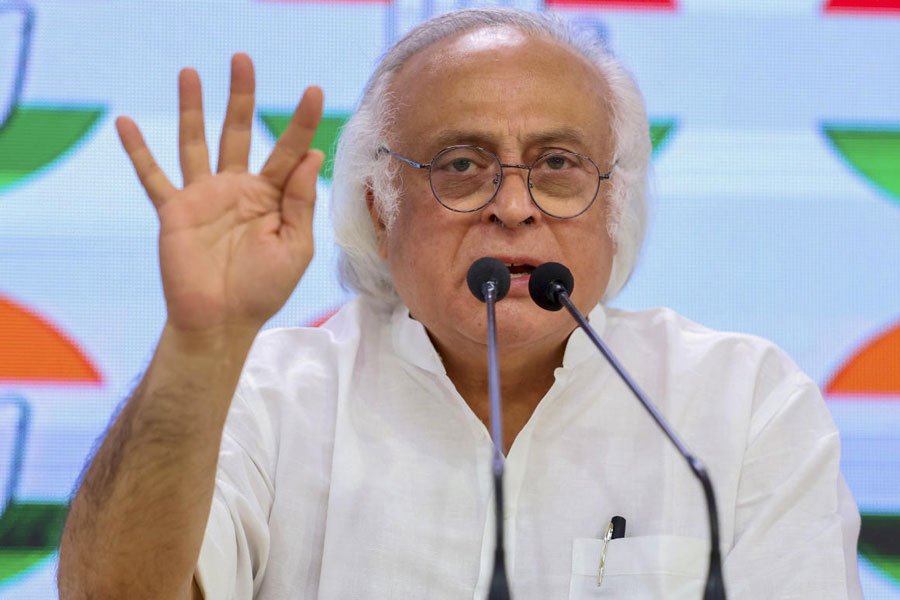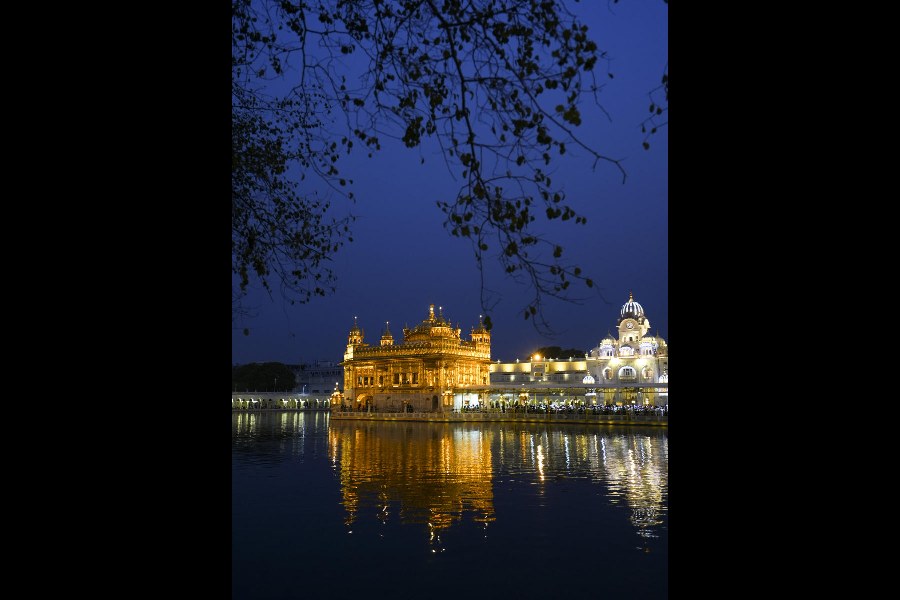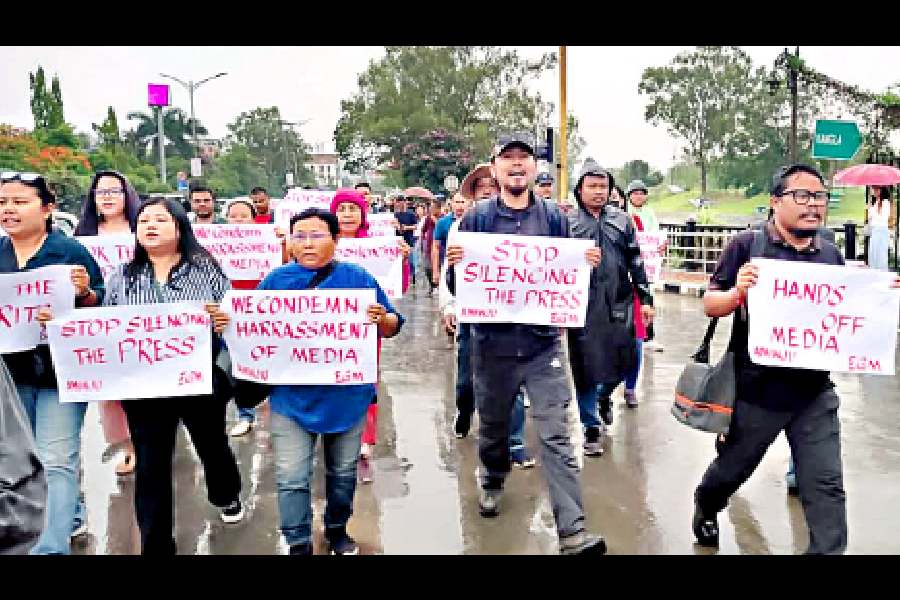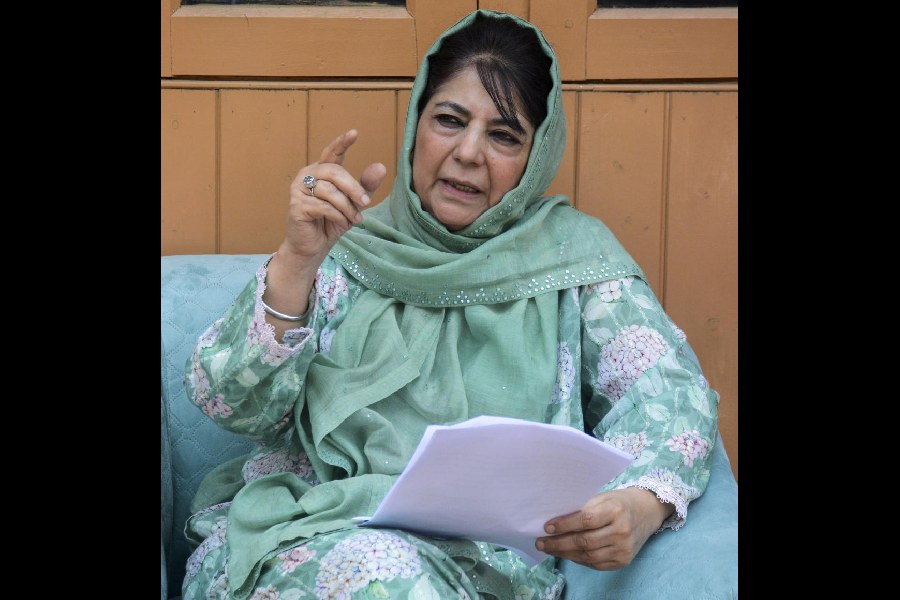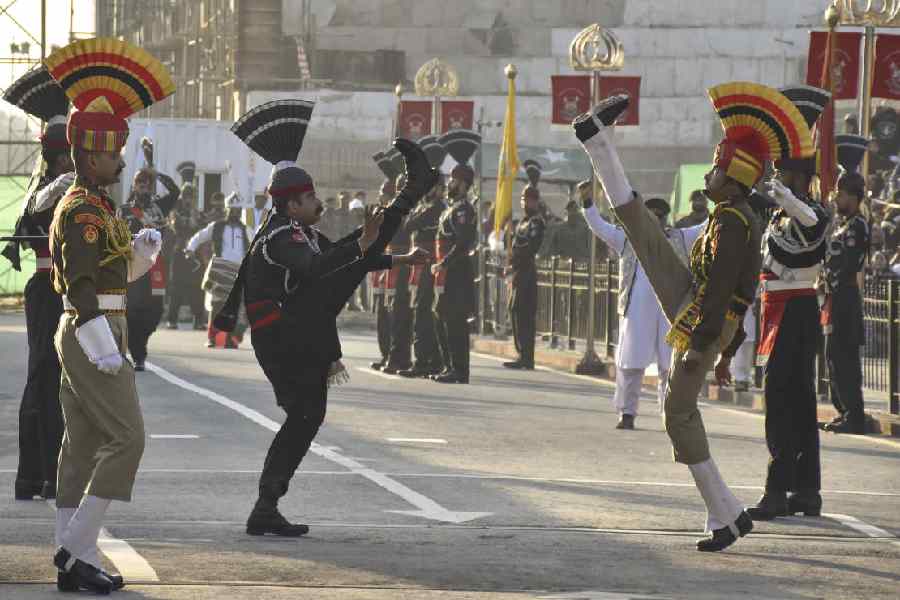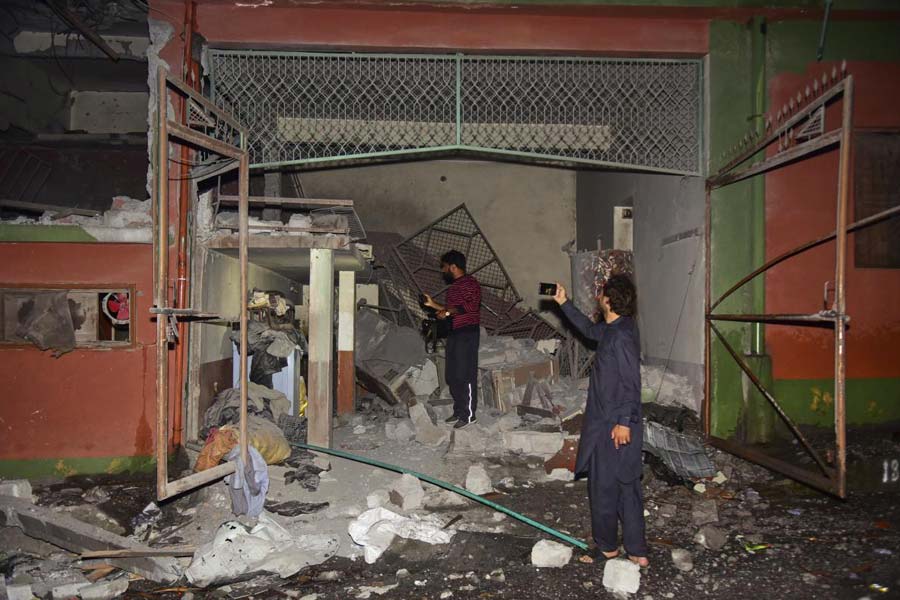 |
| Supporters greet Nitish Kumar as animal and fish resources minister Giriraj Singh (standing behind the CM) looks on at Lauria in West Champaran on Wednesday. (Below) The HPCL sugar factory. Pictures by Ajit Kumar Verma |
 |
Lauria (West Champaran), Nov. 9: Nitish Kumar today showcased HPCL’s newly built Rs 360-crore sugar factory at this remote but densely populated hamlet, showcasing the model of industrialisation he is about to usher in as he embarks on his Seva Yatra.
What has come as a bonanza to over 20,000 cane farmers is the fact that the public sector factory with the capacity to crush 3,500 tonnes of sugarcane per day besides producing 60,000 litres of ethanol and 20MW of electricity, has come up on the site of a moribund sugar unit.
The plant has also come up on the debris of another infamous industry — the “kidnapping” mafia flourished here for over three decades, preying on the ruins of dying or dead sugar industries.
“The sugar factory here marks the beginning of a new era, an era of revival of the happy days for farmers, an era of happiness and prosperity,” the chief minister told a gathering of farmers.
The loud cheers that greeted Nitish appeared cathartic — the kidnapping industry under the banner of the outlawed Jungle Party had abducted over 20 sugar mill owners, functionaries besides hundreds of farmers, perpetrating mayhem and penury.
The yatra, which had promised surprises and kept officials on toes, didn’t disappoint: over 12 helipads had been built in several parts of the sugar-rich and sprawling West Champaran district surrounded by rivers and dotted with dense forests and hills on the India-Nepal border.
The helipads were spread across most of the blocks: none of the officials was sure which the chief minister would use to land and in which direction he would move. Finally, around 10am, Nitish landed near the site of an upcoming multi-purpose dam being built on the river Gandak at Dhanaha, the remotest of the West Champaran blocks, about 250km northeast of Patna.
Not fully satisfied with the pace of the construction work, Nitish asked principal secretary, water resources, Afzal Amanaullah, to monitor the progress on a weekly basis. “Get it completed fast,” was the order.
After staying there for half-an-hour, Nitish boarded the helicopter that brought him to the HPCL-built sugar factory at Lauria which is scheduled to begin production by end-November.
The soil and climate of Champaran had once made the region home to numerous factories which together accounted for 25 per cent of India’s sugar production until the bandits who made the forests their den started calling the shots through the eighties and nineties.
Farmers who had gathered on the sugar factory’s premises vociferously demanded the fixation of the sugar cane rate at Rs 275 to Rs 350 per quintal. Nitish tried to pacify them: “The farmers can’t grow sugarcane at a loss. And the factory can’t run without sugarcane. I am sure the sugar factory management and the farmers will work out ways to mutually benefit one another.”
The factory’s advisor (personnel and technical), S.N. Sinha, told The Telegraph: “The factory will cater to 28,000 acres of sugarcane farmlands, giving employment to as many as 600 people, from workers to engineers and managers.” HPCL has also set up a factory at Sugauli in neighbouring East Champaran district, 50km from Lauria. The Sugauli unit too is likely to become operational by the end of this month.
Nitish, while trying to send the message that he meant business, also tried to keep his venture politically correct. The BJP minister for animal husbandry, Giriraj Singh, who is believed to be a supporter of Nitish’s bete noire Narendra Modi, accompanied the chief minister. The yatra’s billboards and posters dotting the landscape had the picture of deputy chief minister Sushil Kumar Modi.


